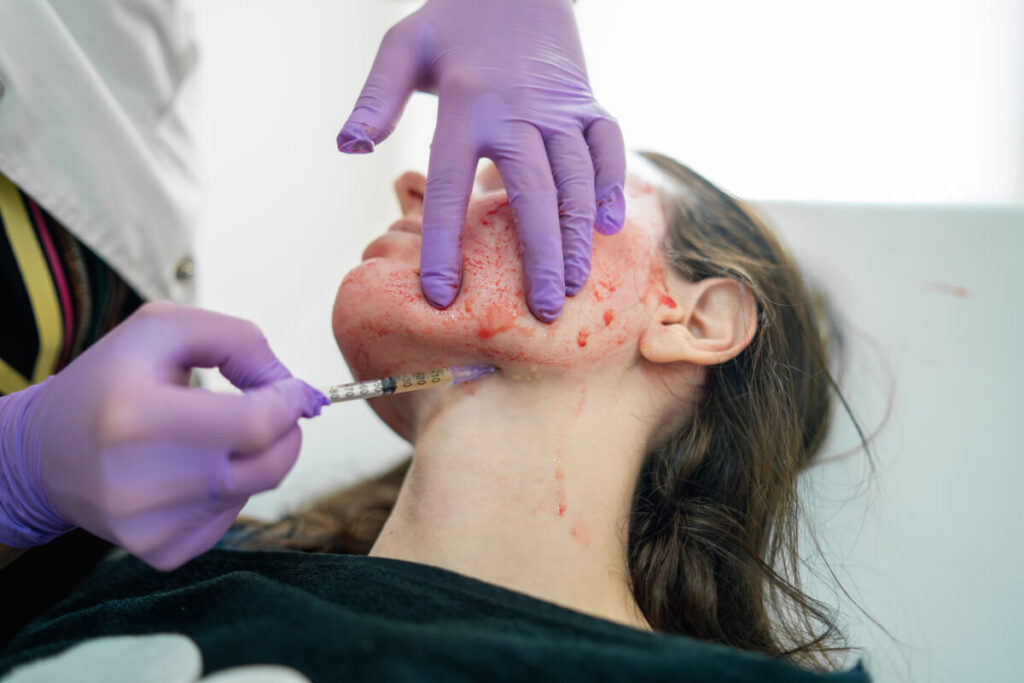Platelet-rich plasma therapy is a type of regenerative medicine derived from a person’s own blood. It has found a wide range of applications such as in cosmetology with its promising effects on hair loss and in sports medicine as it’s said to help in muscle injury, hamstring injuries, and tennis elbow, among others.
So can you still do PRP injections if white blood cell count is low? Low white blood cell count is indicative of underlying abnormalities that may also affect the quality of PRP injection. So although PRP treatment formulations can exclude leukocytes, it’s still best not to proceed with the therapy if you have low white blood cells.
Role Of Leukocytes On PRP
White blood cells or leukocytes are inflammatory cells responsible for the response of the body against an injured tissue or an infection. In platelet-rich plasma, it’s known to exert antimicrobial effects that are helpful in wound healing, especially when used in conjunction with surgical procedures.
It’s also known to have catabolic (breaking down) effects in contrast to the anabolic (building up) effects of platelets in the platelet-rich plasma. Better repair of tendon injuries or other orthopedic conditions may thus be achieved when a proper balance between the blood platelets and white blood cells is observed (that is, a higher platelet concentration must be present than white blood cells).
Other Components Of PRP

Aside from leukocytes, platelet-rich plasma also has other blood components that can help expedite the body’s natural healing process through better tissue regeneration. These include platelets, fibrin, growth factors, and cytokines, which have their corresponding roles in the inflammatory response that’s exploited in the PRP therapy. Note, however, that red blood cells are removed in platelet-rich plasma.
1) Platelets
Platelets are blood components that are fragments of cells. They’re involved in tissue healing through platelet plug formation in the clotting process.
In platelet-rich plasma, platelet concentration is the defining factor, with values of at least 1,000,000 platelet/uL suspended in plasma. Blood platelets are the ones that are said to secrete the growth factors responsible for tissue healing although an association between the levels of platelet concentrate and the healing process isn’t clear yet up to this moment.
2) Fibrin
Fibrin is a factor derived from fibrinogen through the action of the enzyme thrombin, which can help return the normal blood flow upon clot retraction. It’s also a matrix through which platelets, leukocytes, and other blood cells may grow, assemble, and exert their functions. PRP treatment and other regenerative medicine therapies try to mimic and improve upon this natural process to maximize their healing benefits.
3) Growth Factors and Cytokines
Growth factors and cytokines are the main components in the platelet-rich plasma injection that are responsible for improving the healing process. For example, in a study, PRP was able to help in cartilage regeneration to help heal knee osteoarthritis due to the anti-apoptotic (anti-programmed cell death) properties of these growth factors to the chondroblasts, the cells that make up the cartilage of the bones which is degraded in knee osteoarthritis.
Platelet-Rich Formulations

Aspects of platelet-rich plasma therapy are yet to be standardized, including its derivation, activation, and administration. This lack of standardization leads to the differences in the formulations available, which have different constituents and thus have different effects on the body.
1) Leukocyte-Rich PRP
Leukocyte-rich PRP is the commonly yielded platelet-rich plasma formulation because removal of white blood cells from PRP entails an additional procedure.
2) Leukocyte-Poor PRP
Leukocyte-poor PRP is devoid of white blood cells, in that platelet-rich plasma is subjected to cell separator systems to arrive at this formulation. It’s different from leukocyte-rich PRP not just in the aspect of lacking white blood cells but also in the fact that the inflammatory response it triggers is less compared to the leukocyte-rich PRP when injected into the tendon.
3) PRP Gel
PRP gel is made up of fibrin and encompasses platelet-rich fibrin matrix and platelet-rich fibrin applications. The fibrin matrix component of PRP gel is said to be advantageous in that it helps improve the functioning of the growth factors found in the platelet-rich plasma injections.
Why You Can’t Have PRP Injections If You Have Other Conditions With Low WBC Count
Specific conditions marked by leukocytosis or low white blood cell count also coincidentally are contraindications (conditions that, when present, make a drug or therapy harmful to a person) to platelet-rich plasma injection. Worth mentioning here are cancer, autoimmune diseases, and infections.
1) Cancer
Cancers, especially those where bone marrow functioning is affected, are contraindications to platelet-rich plasma injections. Aside from affecting the quality of the PRP injection formulation due to a decrease in the blood components (blood is made in the bone marrow), it may also risk spreading the cancer cells upon drawing and getting back the blood to the patient. The growth factors found in the PRP injection may also further worsen cancer by encouraging the growth of cancer cells.
2) Autoimmune Diseases
Autoimmune diseases with dermatologic manifestations such as systemic lupus erythematosus are also contraindicated in PRP therapy. For example, it was shown in a study that a patient with alopecia areata, an autoimmune disease, and Meniere disease developed serum sickness when treated with PRP injection.
3) Active Infections
Active infections such as Mycobacterium tuberculosis and human immunodeficiency virus can lower the white blood cell counts of a patient when the infection is so severe that the white blood cell is used up before it’s produced. They’re also contraindicated in platelet-rich plasma therapy because of the risk of worsening the infection by spreading the disease more in blood cells.
Side Effects Of PRP Injections
Platelet-rich plasma injection is derived from the patient’s own blood so the risk of getting blood-borne communicable diseases is reduced. However, aside from the worsening of the medical conditions previously discussed, PRP therapy may also bring in other side effects associated with the trauma in the soft tissue brought about by injection needles. These include the following:
- Pain in the injection sites is indicative of the inflammatory reaction brought by the injection and also that stimulated by the PRP treatment. It may subside on its own although the patient should consider consulting a doctor if it lasts more than 3 days.
- Although rare, infection, marked by fever and chills, may also still occur in the injection sites.
- Blood clots and bruising may also be observed at the site of injection because of trauma.
- An injured nerve and damaged tissue may also be caused by PRP injections especially when done unskillfully.
Proper health information must also be done with patients regarding the possibility that the expected effect may not be seen after the procedure. This entails offering alternatives that may be more suitable for them in addressing their health problems.
PEP Factor: The Best Product For Your Hair Loss Needs
Platelet-rich plasma therapy is a type of regenerative medicine with a wide range of benefits through its capacity to augment the healing process. However, certain conditions may not make it doable. For patients with these conditions who still wish to undergo PRP treatment, safer alternatives must be offered that can give the same benefits as PRP therapy.
One of such safe alternatives is FACE Med Store’s PEP Factor, a ready-made product made of natural ingredients. Two of its active ingredients include basic fibroblast growth factor (bFGF) which is known for its cell proliferation effects and copper peptide which is known to have antioxidant properties.
Like PRP therapy, PEP Factor may also be used to complement other cosmetic procedures such as microneedling and stem cell therapy to gain the maximum benefits that may be derived in these procedures, such as improvement of hair loss and skin rejuvenation.
However, unlike PRP therapy, it’s only topically applied so the side effects of this product are only minimal. The risk of side effects associated with injections, especially the risk of soft tissue injuries, may also be avoided.
Get The Best Medical Products at FACE Med Store
It’s best not to proceed with PRP therapy in lieu of low white blood cell count, especially since it’s indicative of impairment in the bone marrow and other underlying abnormalities. It’s best to consult your health provider to help you arrive at a sound decision in which you have weighed the risks and benefits.
At FACE Med Store, we offer top-of-the-line beauty and medical supplies to businesses and regular clients. We also provide customer care services, including complete health information about our products so our clients know what’s best for them. To see our stock list, get in touch with us today.






